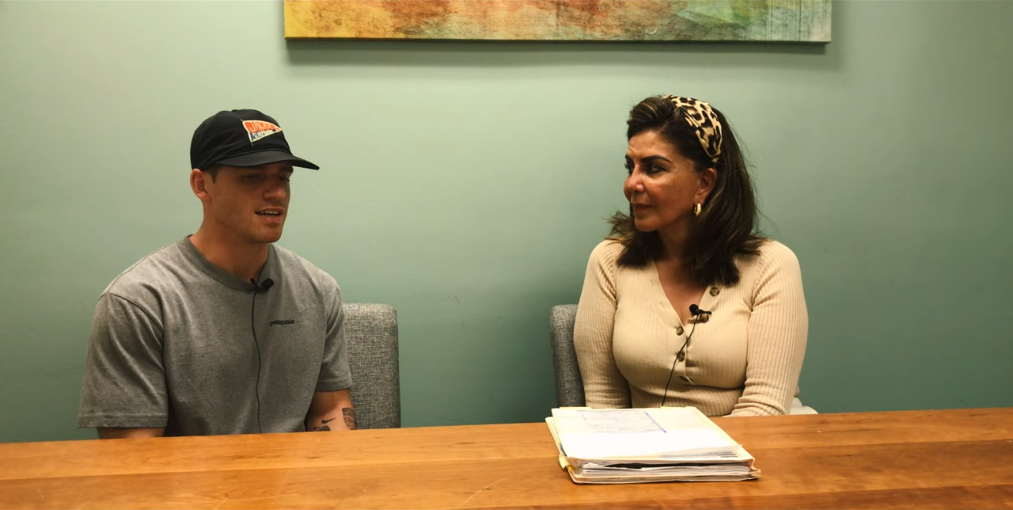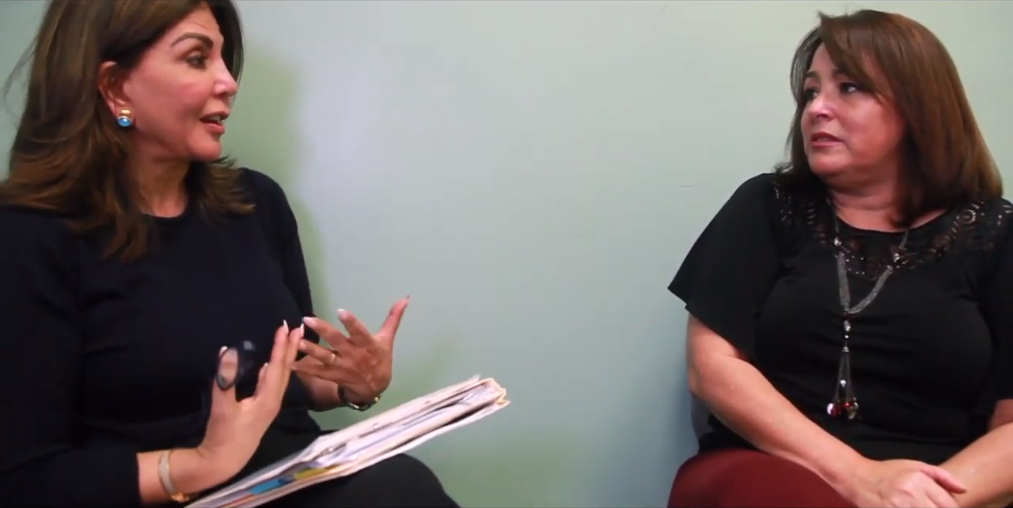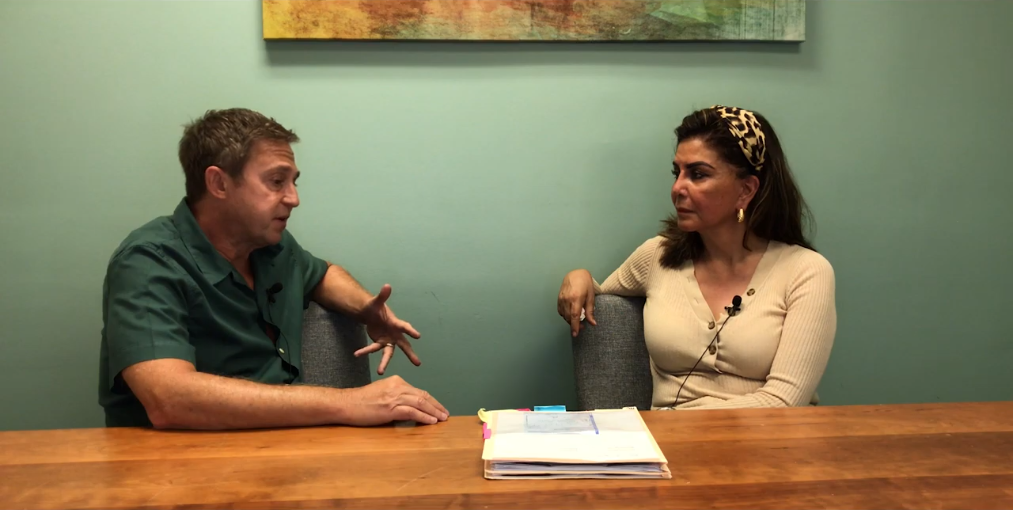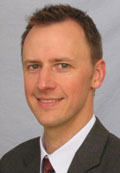Stem Cell Therapy & Regenerative Treatments in Los Angeles
By Steven Meier
From chronic pain to pain relief and improved function, stem cells are paving the way for new, promising treatments in all walks of life – from professional and recreational athletes to senior citizens and people suffering from wear-and-tear injuries and degenerative arthritis.
 The basic goal of musculoskeletal stem cell therapy is to treat painful conditions by reducing inflammation, down-regulating scar tissue formation and promoting soft tissue healing, all in a minimally invasive procedure.
The basic goal of musculoskeletal stem cell therapy is to treat painful conditions by reducing inflammation, down-regulating scar tissue formation and promoting soft tissue healing, all in a minimally invasive procedure.
Meier Orthopedic Sports Medicine in Beverly Hills is bridging the gap between research and practical applications in the real world for regenerative medicine in orthopedics. Stem cells have been gaining momentum in sports medicine and orthopedics in recent years for their potential to advance healing after surgery and to help many patients avoid surgery altogether.
What are Stem Cells?
The National Institute of Health, or NIH, defines stem cells as unspecialized cells which can differentiate into the various tissues in our body, such as muscle, nerves, skin, and blood.1 They play an important role in fetal development by forming the different cell types of the body as well as in healing, where they can replenish dying cells.
Typically, they are described in terms of their source (either embryonic or adult) and potency (the variety of cell types they can become). Totipotent cells can become any type of cell in the body as well as the placenta, pluripotent cells can become any type of cell in the body, and multipotent cells can give rise to several but not all types of cells.
While stem cell technology is currently in its infancy as a medical treatment. scientists’ understanding of it is advancing every day. It is clear that the future of medicine will be in utilizing orthobiologics including stem cells; and with ongoing research, further potential will be revealed and refined. For more information, see theNational Institutes of Health page on stem cells.
Different Types of Stem Cells
Mesenchymal Stem Cells (MSCs)
In orthopedic cases, stem cells are categorized as either autogenous (derived from the patient’s own tissues) or allogenic (“donor” cells from another person). The former is preferred by Dr. Meier as it contains a greater number of live stem cells and can be extracted, processed, and injected into the patient at a single point of care. Allogenic cells, on the other hand, require processing and storage before use, resulting in a significant number of cells dying off – see more on the differences between these sources below.
Both are considered mesenchymal stem cells (MSC’s) – a type of stem cell which can differentiate into osteoblasts (bone cells), chondrocytes (cartilage cells), and myocytes (muscle cells). For people suffering from a degenerative joint disease like osteoarthritis, or the effects of a traumatic injury where irreversible loss of cartilage can lead to chronic pain and permanent joint damage, MSC’s can be used to reduce inflammation and pain.
Mechanistically, MSC’s do not proliferate into new cells to regenerate damaged tissue – that is only possible in the laboratory. Instead, these cells identify the point of damage, migrate to it, and organize other cells involved in the inflammation, repair, and regeneration of tissue to coordinate a healing response. In doing so, MSC’s release specific molecules to promote healing, depending on the type of tissue being repaired. In other words, these specialized cells act as “little pharmacies” or “drug stores” that manufacture and release molecules that exert natural anti-inflammatory effects and direct local cells to stimulate tissue repair.2
This mechanism of action was discovered and proven by the researcher who coined the term mesenchymal stem cell, Dr. Arnold Caplan, who now advocates for the acronym MSC to also mean “medicinal signaling cells.”2 For more information, please watch his presentation on the use of MSC’s in regenerative medicine.
Autogenous MSCs
Autogenous MSC’s are typically derived from a patient’s own bone marrow or fat. Currently available scientific evidence supports the greatest benefit with stem cells taken from bone marrow aspirate concentrate (BMAC), making it Dr. Meier’s preferred choice. Indeed, the pioneer of BMAC treatment, Dr. Philippe Hernigou, has amassed over 30 years of successful data with this technique – see the list of treatable conditions below for a data deep dive. This said, studies investigating the functionality, regenerative capacity, and pain reduction capabilities of other sources of MSC’s are currently underway.
Allogenic MSCs
Allogenic products currently promoted for stem cells therapy in the United States are commonly derived from “birth products” of a developing fetus, using tissues from the amniotic sac, placenta, or umbilical cord. Some medical providers favor these products due to the convenience of off-the-shelf availability – eliminating the need for stem cell harvesting, which can be challenging without proper training and skill. However, there are significant safety concerns with the use of these cells products as the sources of these tissues are often unknown and unregulated. There have been multiple case reports of serious joint infections resulting from use of these products resulting in long-term problems. Furthermore, there are concerns as to how effective these products actually are in treatment with independent studies showing that the number of viable stem cells in the processed tissues is very low. It is likely that the process of collection and storage necessary for amniotic stem cell usage kills most of the live cells that are hypothesized to be beneficial, making amniotic stem cells products an inefficient treatment not without significant risks. For these reasons and others, Dr. Meier prefers to use patients’ own autogenous stem cells, which provide a high level of viability with minimal risk of complications.
Stem Cell and Regenerative Treatments
Stem cell treatment at MOSM is separated into three steps. First, bone marrow aspirate (BMA) is extracted through a small incision from the patient’s ilium – a large bone in the pelvis which is known to provide the richest source of mesenchymal stem cells in the body. Then, the BMA is separated into its components. Finally, the therapeutic parts of the mixture – MSC’s, platelets, growth factors, cytokines, and plasma proteins, collectively known as bone marrow aspirate concentrate (BMAC) – are extracted and injected back into the patient into the area requiring treatment to promote healing.
Stem cell injections can be given along with surgery to enhance its effects or as a standalone therapy. Many patients with painful orthopedic conditions opt to try stem cell therapy in an attempt to avoid surgery altogether which can be accomplished in many cases. When administered concomitantly with a surgical procedure, this can decrease the risk of infection, reduce postoperative inflammation, promote faster healing, and earlier return to homeostasis of the joint.
Stem cell injections can also be combined with other orthobiologic treatments like prolotherapy – injection of a dextrose-saline solution or platelet rich plasma (PRP). Platelets are known to carry a multitude of growth factors and cytokines important for tissue repair and healing, and it is hypothesized that the incorporation of stem cells could “supercharge” this healing response.
What conditions can stem cell therapy treat?
MSC treatment is applicable to a number of different musculoskeletal conditions.3,4,5,6
Osteoarthritis
Osteoarthritis involves the gradual degeneration of joint cartilage and bone, causing chronic pain and stiffness. Stem cell therapy can be helpful in treating this condition, as MSCs can reduce inflammation and pain in osteoarthritic joints.
A growing base of evidence supports the use of MSC’s in osteoarthritis. One study found that 88% of patients >65 years old receiving an MSC injection had improved cartilage after two years, and no patient had to resort to a total knee replacement.7 Another randomized control trial found benefit with an MSC injection over hyaluronic acid injection – another anti-inflammatory sometimes used for arthritis.8
As previously stated, stem cell injections can sometimes help patients avoid surgery altogether. This has been demonstrated in the case of knee osteoarthritis. Phillipe Hernigou MD et al. performed a study in which 30 patients with osteoarthritis had one knee injected with BMAC intraosseously (inside the bone) and the other surgically reconstructed with total knee replacement. The researchers found that the patients treated with BMAC experienced pain relief as good as those undergoing knee replacement but with fewer complications. Specifically, after an average follow-up of 12 years, 6 of 30 knees that had been surgically replaced required subsequent surgery, while only 1 of 30 knees receiving stem cell treatment did. Anatomically, cell therapy conferred greater healing of cartilage and bone marrow lesions (the build-up of fluid in the bone marrow associated with osteoarthritis). With regards to safety, there were no blood clots in the stem cell knees, while 15% of surgically replaced knees resulted in a clot. All in all, 21 patients preferred cell therapy compared to 9 preferring knee reconstruction.9
Articular Cartilage Injury
Articular cartilage is the tissue that covers the ends of bones where they come into contact, providing cushioning and allowing joints to slide without friction. When injured, it can cause significant pain and swelling of the joint. Unfortunately, articular cartilage has no independent blood supply, meaning that it has little to no independent healing capacity. BMAC has shown particular promise in this field, with one systematic review of human studies suggesting good to excellent outcomes for moderate cartilage injuries. Included in these outcomes were quality-of-life measures and MRI measured cartilage repair.10
Meniscal Repair
The meniscus is a cartilage cushioning structure that acts as a shock absorber and stabilizer for the knee. A torn meniscus is one of the most common knee injuries, occurring across all lifestyles and activity levels. MSC’s could offer another treatment option, with one randomized, double-blind, controlled study of 45 patients finding increased meniscal volume (an indication of better healing) and decreased pain in those receiving an MSC injection compared to hyaluronic acid injection.11
While arthroscopic surgery is often performed for meniscus tears, it is not necessarily “required”. Patients can elect to try an orthobiologic injection first. At MOSM, we have found about 70% of patients with meniscus tears are happy with their pain relief after BMAC with PRP and can avoid surgery altogether.
Rotator Cuff Repair
The tendon tissue in rotator cuff tears is notorious for slow and incomplete healing – despite improvements in surgery – making rotator cuff injuries painful, debilitating, and difficult to treat.
The significant long-term benefit with MSC injection has already been found with rotator cuff repair.
The first study to evaluate the effects of biologically augmenting rotator cuff repairs with stem cells was conducted by Gomes et al.12 Fourteen patients underwent rotator cuff repair surgery supplemented with BMAC with stem cells, harvested from the patients’ pelvic bones. At 12 months, 100% of the repairs had healed completely. For comparison, conventional repairs without stem cells have a one-in-three failure rate.13
Dr. Hernigou et al. later corroborated these results, finding that MSC-supplemented rotator cuff repair conferred a 100% complete healing rate vs. 67% with surgery alone. Perhaps more impressively, the percent of intact rotator cuffs 10 years after surgery was nearly double with MSC injection (87%) compared to without MSC injection (44%), and the improvement was directly correlated with the number of stem cells injection.14 There were no safety concerns.
Fracture Non-unions
Fracture non-union – or the failing of a broken bone to heal – is a serious complication that can occur even after the best surgical techniques. Typical causes include shifting of the bones during healing, poor blood supply, or infection, and non-unions can leave the patient with pain, weakness, instability, or deformity permanently if not treated.
Several research groups have published promising results for non-union treatment with stem cells, stemming back to 1991, when Dr. Connolly et al. found equivalent rates of bone union with bone marrow injection compared to bone grafting, but with fewer complications.15 Then, in 2013, Dr. Ashok Singh demonstrated that stem-cell-containing bone marrow injections healed 10 of 12 delayed or non-union of bones confirmed by x-ray in an average of 16 weeks.16
Further, Dr. Hernigou demonstrated this technique to be effective in patients with diabetes as well – a condition which is known to reduce the body’s ability to heal fractures. In addition to improving the likelihood of bone healing, MSC’s also reduced the rates of skin necrosis, infection, amputation, poor bone union, major complications, and minor complications compared to a standard bone graft.17
Avascular Necrosis
Avascular necrosis constitutes weakening bone tissue as a result of reduced blood supply – typically from trauma, fatty deposits, steroids, or disease. Over time, the bone will weaken and cause pain, eventually resulting in a bone collapse if not properly cared for.
Dr. Hernigou has published widely on this topic, including a 30-year review of progress in hip osteonecrosis.18 Most compellingly, an analysis of 371 patients with osteonecrosis of the hip who received bone-marrow injections revealed that the average volume of necrosis decreased by more than 50% after 12 years, with only 94 resorting to a total hip replacement.
In the knee, similarly positive results have been seen. In fact, the patients of the previously mentioned study in knee osteoarthritis also had osteonecrosis caused by corticosteroid use.9 After stem cell injection, the reduced rate of complications and number of patients requiring full knee replacements found in this study corroborates Dr. Hernigou’s hip results, making a compelling case not only for management of osteonecrosis, but also for prevention of surgery in the long-term.
Stem Cell Therapy FAQs
What are the risks of stem cell therapy in orthopedic procedures?
Using BMAC is very safe and the potential risks of treatment are very few – usually limited to short-lived minor discomfort and stiffness after treatment. Using the patient’s own tissue is well tolerated and stem cell injections are minimally invasive. The low risk of procedure-related complications and minimal post-procedure downtime can make BMAC stem cell therapy a very attractive alternative to surgery in many cases.
Infection is unlikely, as BMAC is antimicrobial (destroys microorganisms that can cause infection), and pain and swelling are often prevented by the natural, anti-inflammatory proteins contained in BMAC. In fact, these same anti-inflammatory molecules have also been shown to deactivate disruptive enzymes which lead to chronic degeneration of tissue. In other words, some components of BMAC may slow or even stop degenerative conditions.
One unique – and misconceived – concern that patients may have with stem cell therapy is tumor growth. Intuition may tell you that stem cells, which under certain circumstances do proliferate into new cells for long periods of time, could form a tumor when injected into the body, particularly if injected near the site of a previous tumor. This is not true with the case of BMAC MSC’s, which have been shown by Hernigou et al. to not increase the incidence of tumor recurrence after an average of 15 years post-injection.19
Altogether, the long-term safety and efficacy of BMAC injections containing stem cells is emerging favorably. In this article we’ve referenced studies with follow-ups of 10 years, 12 years, and 15 years, all of which have found significantly positive results and none of which have demonstrated significant safety concerns.9,14, 19
Are there any ethical issues with the current use of stem cells in orthopedic medicine?
You may have heard ethical debates over the use of embryonic stem cells, which terminate a fertilized egg to acquire the cells. Embryonic stem cells are not used in orthopedic procedures at Meier Orthopedic Sports Medicine. We use only adult mesenchymal stem cells harvested from the patients’ own tissues.
Which joints are amenable to stem cell therapy?
Knees, shoulders, hips, ankles, elbows and the spine are common sites for stem cell therapy.
Who should not receive stem cell therapy?
Patients with blood-born cancer, or other disorders of bone marrow.
Some patients who are at a higher risk with surgery – for example, those with diabetes – may make excellent candidates for stem cell therapy, which could provide them with a low-risk alternative when their other options are limited. See the section “fracture non-unions” above for a study description of stem cell therapy in people with diabetes.
Of course, the decision to have orthobiologic treatment will ultimately be made in conjunction with your orthopedic specialist, with whom you should schedule an appointment if you are considering treatment.
Citations
- Stem Cell Information (n.d.). Retrieved from https://stemcells.nih.gov/info/basics/6.htm
- Caplan, A. (June 2013). The Science of Mesenchymal Stem Cells and Regenerative Medicine. Presentation. Retrieved from https://www.cellmedicine.com/the-science-of-mesenchymal-stem-cells-and-regenerative-medicine-arnold-caplan-phd-part-1/
- Akpancar, s., Tatar, O., Turgut, H., Akyildiz, F., and Ekinci, S. (August 2016). The Current Perspectives of Stem Cell Therapy in Orthopedic Surgery. Retrieved from https://www.ncbi.nlm.nih.gov/pmc/articles/PMC5253188/
- Saltzman, B.M., et al. (August 2016). Stem Cells in Orthopedics: A Comprehensive Guide for the General Orthopedist. Retrieved from https://www.ncbi.nlm.nih.gov/pubmed/27552451
- Im, G-I. (February 2017). Clinical use of stem cells in orthopaedics. Retrieved from https://www.ecmjournal.org/papers/vol033/vol033a14.php
- Schmitt, A., van Griensven, M., Imhoff, A.B., and Buchmann, S. (February 2012). Application of Stem Cells in Orthopedics. Retrieved from https://www.ncbi.nlm.nih.gov/pmc/articles/PMC3328166/
- Koh, Y.G., Choi Y.J., Kwon S.K., Kim Y.S., and Yeo J.E. (May 2015). Clinical results and second-look arthroscopic findings after treatment with adipose-derived stem cells for knee osteoarthritis. Retrieved from https://www.ncbi.nlm.nih.gov/pubmed/24326779
- Vega, A., et al. (August 2015). Treatment of Knee Osteoarthritis With Allogeneic Bone Marrow Mesenchymal Stem Cells: A Randomized Controlled Trial. Retrieved from https://www.ncbi.nlm.nih.gov/pubmed/25822648
- Hernigou, P., et al. (March 2018). Subchondral stem cell therapy versus contralateral total knee arthroplasty for osteoarthritis following secondary osteonecrosis of the knee. Retrieved from https://www.ncbi.nlm.nih.gov/pubmed/29589086
- Chahla, J., et al. (January 2016). Concentrated bone marrow aspirate for the treatment of chondral injuries and osteoarthritis of the knee: a systematic review of outcomes. Retrieved from https://www.ncbi.nlm.nih.gov/pubmed/26798765
- Vangsness, C.T. Jr, et al. (January 2014) Adult human mesenchymal stem cells delivered via intra-articular injection to the knee following partial medial meniscectomy: a randomized, double-blind, controlled study. Retrieved from https://www.ncbi.nlm.nih.gov/pubmed/24430407
- Gomes, J.L.E., et al. (February 2012). Conventional rotator cuff repair complemented by the aid of mono- nuclear autologous stem cells. Retrieved from https://www.ncbi.nlm.nih.gov/pubmed/21773831
- Gerber, C., et al. (April 2000). The results of repair of massive tears of the rotator cuff. Retrieved from https://www.ncbi.nlm.nih.gov/pubmed/10761941
- Hernigou, P., et al. (September 2014). Biologic augmentation of rotator cuff repair with mesenchymal stem cells during arthroscopy improves healing and prevents further tears: a case-controlled study. Retrieved from https://www.ncbi.nlm.nih.gov/pubmed/24913770
- Connolly, J.F., et al. (May 1991). Autologous marrow injection as a substitute for operative grafting of tibial nonunions. Retrieved from https://www.ncbi.nlm.nih.gov/pubmed/2019059
- Singh, A.K., et al. (April 2013). Percutaneous autologous bone marrow injections for delayed or non-union of bones. Retrieved from https://www.ncbi.nlm.nih.gov/pmc/articles/PMC6204543/
- Hernigou, P., et al. (August 2015). Percutaneous injection of bone marrow mesenchymal stem cells for ankle non-unions decreases complications in patients with diabetes. Retrieved from https://www.ncbi.nlm.nih.gov/pubmed/25795249
- Hernigou, P., et al. (March 2016). Stem Cell Therapy for the Treatment of Hip Osteonecrosis: A 30-Year Review of Progress. Retrieved from https://www.ncbi.nlm.nih.gov/pubmed/26929793
- Hernigou P., et al. (September 2014). Regenerative therapy with mesenchymal stem cells at the site of malignant primary bone tumour resection: what are the risks of early or late local recurrence? Retrieved from https://www.ncbi.nlm.nih.gov/pubmed/24906983



